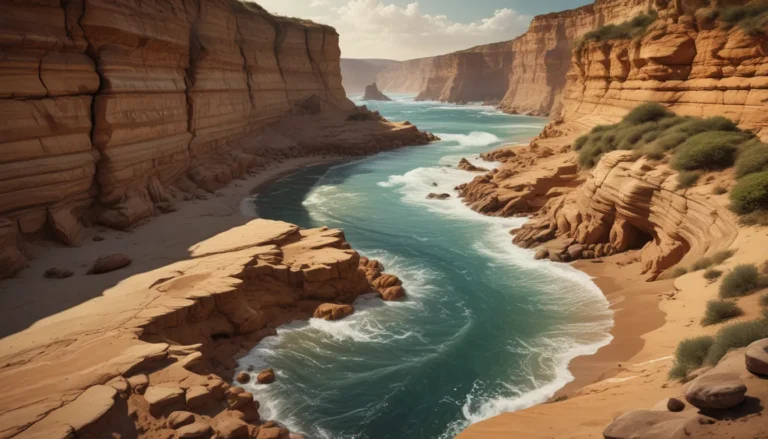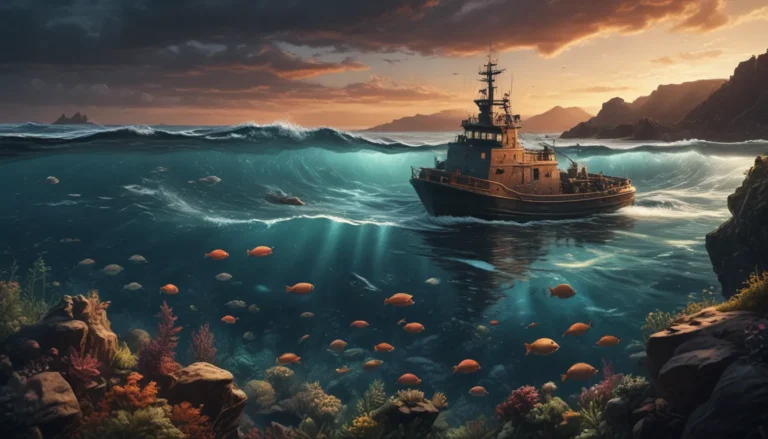A Note About Images: The images used in our articles are for illustration purposes only and may not exactly match the content. They are meant to engage readers, but the text should be relied upon for accurate information.
Welcome to the fascinating world of paleontology, where ancient life forms and their fossilized remains hold the key to unraveling Earth’s history. From the mighty dinosaurs to the evolution of our planet, paleontology takes us on a captivating journey back in time. Whether you’re a curious learner or a seasoned enthusiast, get ready to embark on a thrilling adventure through the depths of prehistoric Earth. So, fasten your seatbelt and let’s dig into the mesmerizing realm of paleontology!
Unveiling the Secrets of Ancient Life Forms
Paleontology, derived from the Greek words “paleo” meaning ancient and “ontos” meaning being, is the science devoted to understanding the history of life on Earth through the examination of fossils. These fossilized remains or traces of ancient organisms provide us with valuable insights into the diverse species that once inhabited our planet. Fossils serve as a window into the past, offering a glimpse of prehistoric life and igniting our imagination about the world before our time.
Journey Through Time: Fascinating Discoveries in Paleontology
1. Revealing the Oldest Fossil
The oldest known fossil, the fossilized stromatolites discovered in Western Greenland, dates back over 3.5 billion years, providing evidence of life on Earth billions of years ago.
2. Reign of the Dinosaurs
Dinosaurs ruled the Earth for over 165 million years, dominating the planet from the late Triassic period until their extinction around 65 million years ago.
3. The “Bone Wars”
The fierce rivalry between paleontologists Edward Drinker Cope and Othniel Charles Marsh, known as the “Bone Wars,” fueled a flurry of fossil discoveries in the American West during the late 19th century.
4. Insights from Trace Fossils
Trace fossils, such as footprints and burrows, offer evidence of ancient behaviors, shedding light on how prehistoric organisms interacted with their environment.
5. Mary Anning: A Pioneer in Paleontology
Mary Anning, a pioneering female paleontologist in the 19th century, made significant contributions to the field with her remarkable fossil discoveries, including the first complete Ichthyosaur skeleton.
6. Delving into Paleobotany
The study of paleobotany focuses on ancient plants, helping us understand the evolution of vegetation throughout geological history.
Discovering Paleontological Treasures
7. The Burgess Shale: A Marine Fossil Bonanza
The Burgess Shale preservation site in the Canadian Rockies contains incredibly well-preserved fossils from the Cambrian period, offering invaluable insights into early animal life.
8. Revolutionizing Human Evolution with “Lucy”
The discovery of the 3.2-million-year-old Australopithecus afarensis fossil, nicknamed “Lucy,” in Ethiopia in 1974 revolutionized our understanding of human evolution.
9. Unveiling the Argentinosaurus
The Argentinosaurus, the largest dinosaur ever discovered, roamed South America over 90 million years ago, reaching lengths of up to 115 feet and weighing around 90 tons.
10. Innovations in Paleontological Technology
Modern paleontologists utilize advanced techniques such as CT scanning and DNA analysis to study fossils and unlock the secrets hidden within them.
11. Evolution of Powered Flight with Pterosaurs
Pterosaurs, the first vertebrates to achieve powered flight, evolved around 228 million years ago and diversified into various species during the Mesozoic era.
Paleontology and the Dynamics of Climate Change
12. Contributions to Understanding Climate Change
Paleontology plays a crucial role in our understanding of climate change by studying past climatic conditions and their impact on ancient ecosystems, providing essential data for predicting future environmental changes.
13. Journey Through the La Brea Tar Pits
The La Brea Tar Pits in Los Angeles, California, serve as a paleontological hotspot, yielding well-preserved fossils that offer a glimpse into the Ice Age and the animals that inhabited that era.
14. Unraveling the Mysteries of Dinosauria
The term “dinosaur,” meaning “terrible lizard,” was coined by Sir Richard Owen in 1842 to describe the formidable ancient reptiles that once roamed Earth.
The Impact and Significance of Paleontology
Paleontology not only enriches our scientific knowledge but also sparks the imagination of people of all ages, allowing us to envision a world long before our time. The field continues to evolve with new discoveries and technologies, shedding light on Earth’s intricate past and our place within it.
Conclusion: Embracing the Enigmatic World of Paleontology
Paleontology is a captivating field that provides us with invaluable insights into the ancient history of our planet. From colossal dinosaurs to tiny microorganisms, paleontology allows us to glimpse the vast diversity of life throughout the ages. By studying ancient life forms, paleontologists continue to unravel the mysteries of our planet’s past, offering a deeper understanding of the world we inhabit today.
FAQs About Paleontology
Q: What is paleontology?
A: Paleontology is the scientific study of prehistoric life forms through the examination and analysis of fossils.
Q: Why is paleontology important?
A: Paleontology is crucial for understanding the history of life on Earth, biodiversity, extinction events, and our place in the natural world.
Q: How do paleontologists find fossils?
A: Paleontologists find fossils through excavation, searching in rock formations, and using advanced technologies like ground-penetrating radar.
Q: Can anyone become a paleontologist?
A: While it requires education and training, anyone passionate about paleontology can pursue a career in the field.
Delve into the wonders of paleontology and let the mysteries of our planet’s past ignite your curiosity and inspire your thirst for knowledge!






